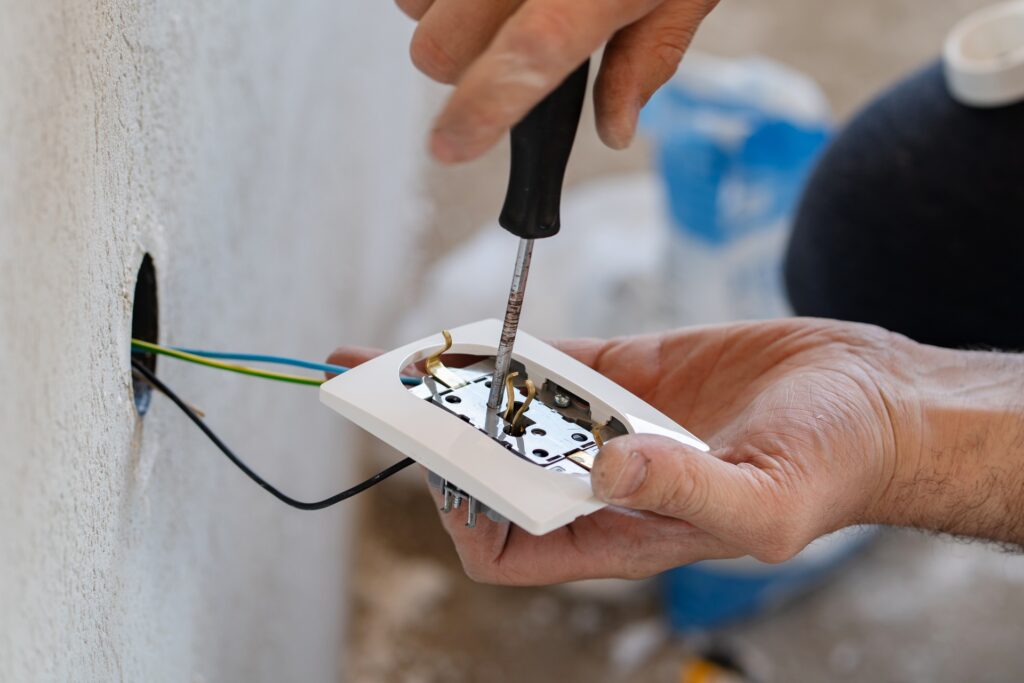When an electrical outlet in your Minneapolis home suddenly stops working, it can be more than just a minor inconvenience. You may not realize how much you rely on that single outlet until your phone charger stops working or a key appliance shuts down at the worst time. A non-functioning outlet can disrupt your routine, raise safety concerns, and point to larger issues within your electrical system.
Ignoring a dead outlet is not a good idea. Even if the problem seems small, it could be caused by something more serious like faulty wiring or overloaded circuits. Knowing what causes outlets to stop working and how to troubleshoot the problem safely is a necessary step toward keeping your home running smoothly and reducing electrical risks for your family. Below, we walk through the basics of what may lead to a dead outlet and the first things you can do to approach the issue the right way.
Understanding Dead Electrical Outlets
A dead electrical outlet means there is no power supply reaching that specific location even though it should be active. This is different from turning off a switch or unplugging a device. With a dead outlet, the problem lies within the electrical system itself. You might notice it when something suddenly stops working or when plugging in a device does nothing at all.
Common causes of a dead outlet include:
– Tripped circuit breakers: When too many devices draw current from the same source, the breaker might shut off to prevent overheating.
– Blown fuses: In some older electrical panels, fuses can blow under similar overload conditions.
– Loose wiring: Over time, wires can shift or wear down, disconnecting from the outlet.
– Faulty appliances: Sometimes the problem might seem like the outlet, but the device you plugged in could be shorting out the circuit.
– Worn-out outlets: Use over many years can wear down internal components to the point where the outlet no longer functions.
Identifying the root cause of an issue early can prevent further damage and lower the risk of electrical fire. If multiple outlets in the same area are affected, it is often a sign the problem goes beyond a single plug and may involve more of your home’s wiring or breakers.
Safety Precautions Before Inspection
Before checking or touching anything related to your electrical system, it is important to take personal safety seriously. Even if an outlet seems inactive, hidden electrical current can still pose a shock hazard.
Here are a few critical steps to follow:
1. Turn off the power: Go to your breaker panel and flip the breaker connected to that outlet. If you are unsure which breaker connects, shut off the power completely before beginning any inspection.
2. Use the right gear: Wear rubber-soled shoes and avoid standing in wet areas. If you have them, use insulated gloves and tools designed for electrical testing.
3. Do not assume an outlet is dead: Always test for power before beginning any work. Even a faulty outlet could have partial power or a damaged current flow that may still be dangerous.
One example of how easily an inspection can go wrong: A Minneapolis homeowner once assumed a seemingly dead outlet near their kitchen sink was completely inactive and tried to replace it without flipping the breaker. Unfortunately, it resulted in a small shock and a damaged tool, all because the circuit was connected to a different breaker than expected. Taking time to turn off the entire power source would have made the situation safer and prevented damage.
Safety should never be treated as an afterthought. Always take proper precautions before working around electricity, no matter how simple the task seems. When in doubt, it is best to stop and call in professionals who handle these risks daily.
Steps to Identify the Problem
Once you have taken safety precautions, the next step is to start identifying the root cause of the dead outlet. Some signs might be easy to spot, but others take more care and the right tools to detect accurately.
Start with these key checkpoints:
1. Check the breaker panel: Look for any breakers that have tripped. A tripped breaker might not look fully off but will often be positioned between on and off. Flip the breaker firmly to off, then back to on to reset it.
2. Test nearby GFCI outlets: Outlets in bathrooms, kitchens, garages, and outdoor areas are often part of a Ground Fault Circuit Interrupter (GFCI) system. If a GFCI outlet elsewhere in the house has tripped, it can cut power to other outlets on the same circuit. Press the reset button on any GFCI outlets you find and see if that restores power.
3. Use a multimeter: This tool helps check whether there is voltage present at the outlet. Set the multimeter to measure AC voltage and carefully test the slots. If the reading shows zero, the outlet is not receiving power. If the reading seems unstable or fluctuates, that could show a bad connection or damaged wiring.
4. Inspect the outlet connections: With the power turned off, remove the outlet cover and gently pull out the outlet. Check the wiring inside. Look for loose screws, disconnected wires, or signs of burning or discoloration. Keep in mind, even if you spot these issues, they should never be fixed without training and experience.
Some homes in Minneapolis have older wiring setups where multiple outlets may be daisy-chained together. In this case, a dead outlet might actually be caused by a problem in an entirely different location. If you notice flickering lights or other unusual electrical behavior in nearby rooms, the issue could be more widespread.
Professional Solutions for Dead Outlets
Trying to figure things out on your own when it comes to electricity can lead to bigger problems if you are not careful. Even if something seems like a simple fix, like a loose wire or a breaker that will not reset, there might be something much deeper causing the issue.
Our professionals check the entire electrical path, from the breaker box to the wiring behind your walls. Electrical work must follow local building codes, and improper repairs can put your home and safety at risk. Any signs of melting around outlets, frequent circuit trips, or buzzing sounds from outlets should be handled by trained professionals right away.
When our technicians visit a home in Minneapolis for outlet work, they use professional-grade diagnostic equipment to track the issue quickly and accurately. They also look for signs of wear in surrounding wiring, which can sometimes prevent future problems before they happen. Instead of replacing just a faulty outlet, they help make sure nothing else in the system has been damaged.
Working with trained professionals also helps protect your home’s warranty and ensures that electrical components are installed safely. Whether you have recently updated appliances or are planning renovations, it is smart to get all new outlets checked and installed correctly to avoid issues later.
Maintaining Healthy Electrical Outlets
Once your outlets are up and running again, there are a few steps you can take to avoid having problems creep back up. Keeping your electrical system in good condition does not have to be complicated, but you do have to be consistent.
Here are a few maintenance tips that help keep outlets safe and working:
– Avoid plugging high-wattage devices into the same outlet
– Do not force plugs into loose or tight outlets
– Replace outlets that feel warm to the touch or are cracked
– Do not run long extension cords as a permanent power solution
– Schedule regular electrical inspections, especially in older homes
– Watch for signs of rust or moisture around outlets, especially in basements or near sinks
If any of your outlets start acting up again—devices charging slowly, plugs falling out, or the outlet working off and on—it might be time for another check. It is better to deal with a warning sign now rather than wait for a full failure that could interrupt your day or risk your safety.
Keep Your Minneapolis Home Safe and Functional
Dead or unreliable outlets are more than just a hassle. They can affect your quality of life, your safety, and even your home’s value. Consistent, working outlets help ensure all your daily tasks go smoothly, from making morning coffee to running your HVAC system.
Electrical outlet installation in Minneapolis is something that should be done right the first time. When outlets stop working, it is often a clue that something deeper is not functioning the way it should. Proper inspection and repair do not just solve the immediate problem. They help protect your home for the long run.
If you are frequently dealing with failing outlets or notice power issues in specific parts of your home, do not put off getting help. Addressing the problem now can save time, prevent property damage, and reduce the risk of electrical fires or shocks down the road.
If your home’s outlets are causing daily interruptions, having reliable support in Minneapolis is key to keeping everything running safely and efficiently. Stafford Home Service Inc. delivers dependable solutions through professional electrical outlet installation in Minneapolis, helping homeowners resolve persistent problems and prevent future complications. For a quick estimate or to book a service visit, please contact us today.





